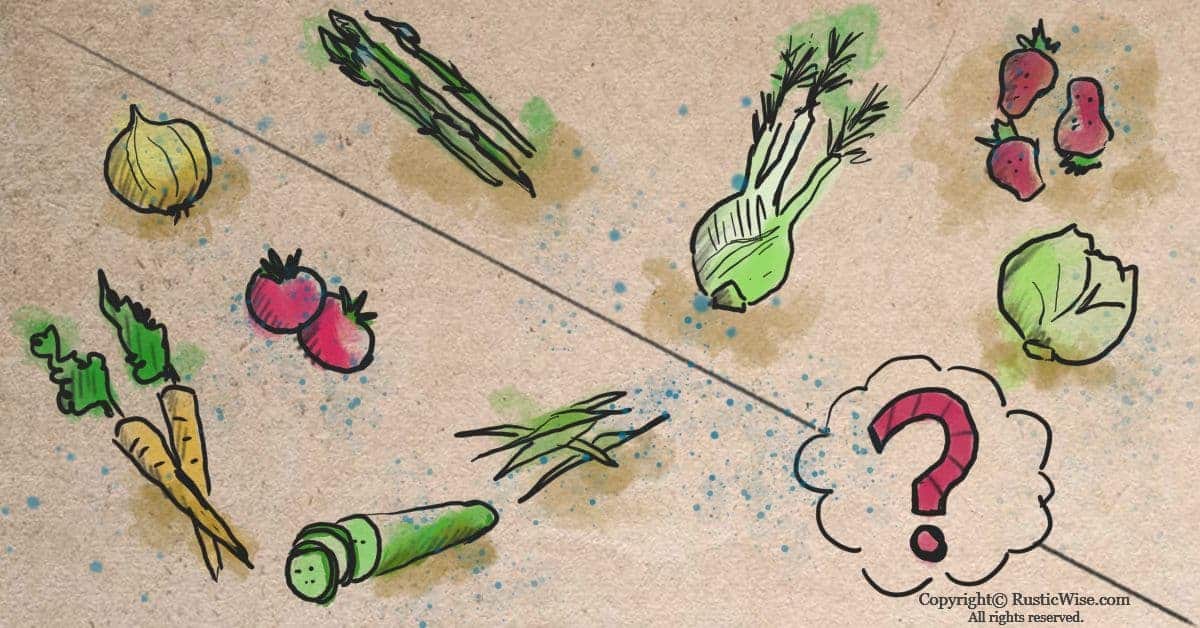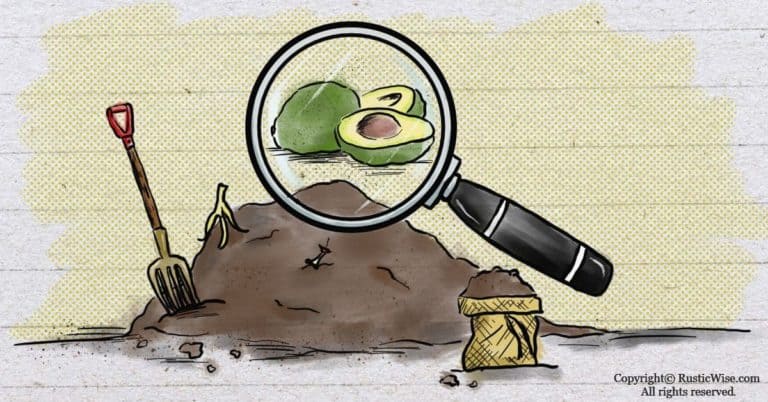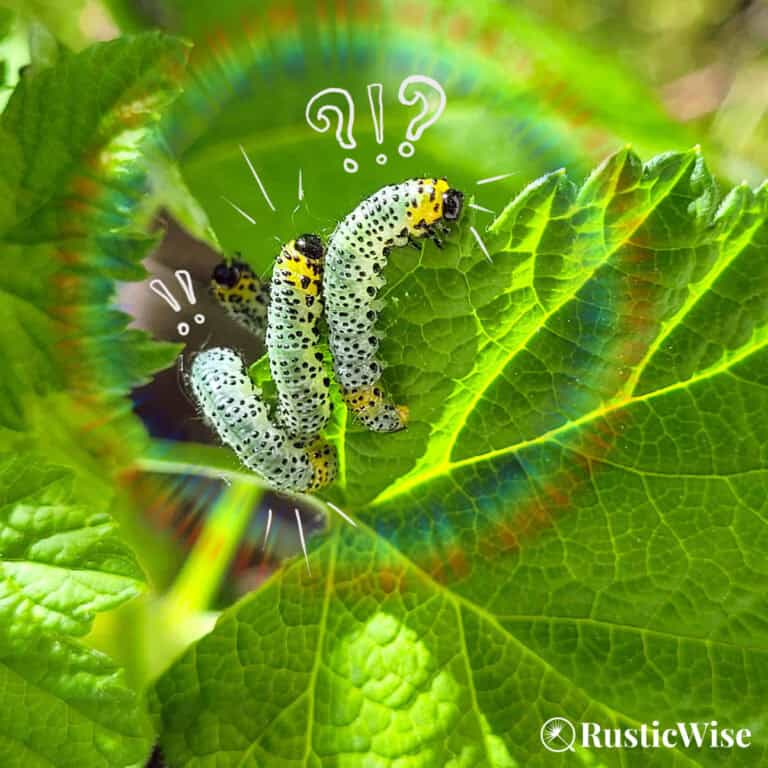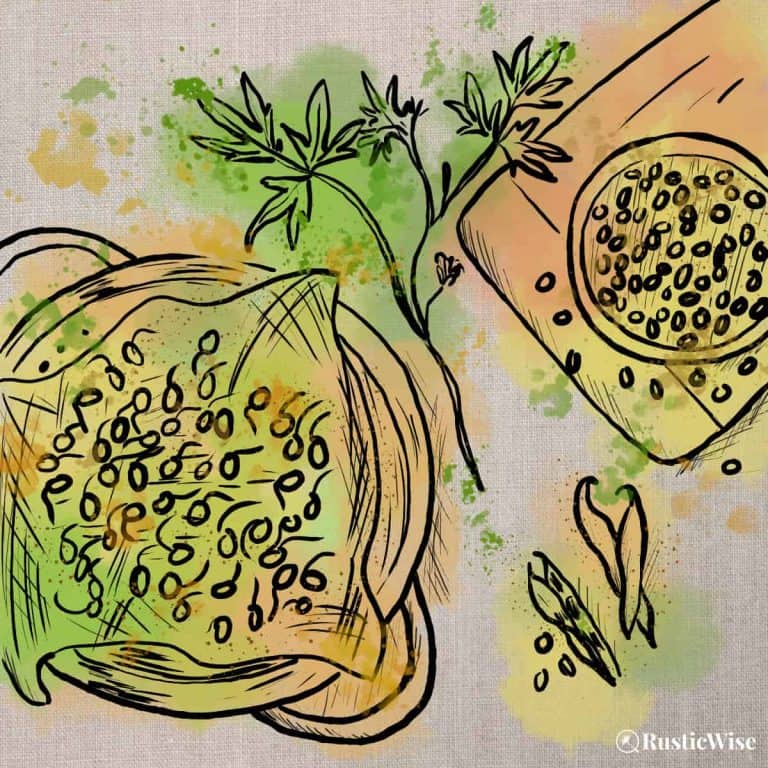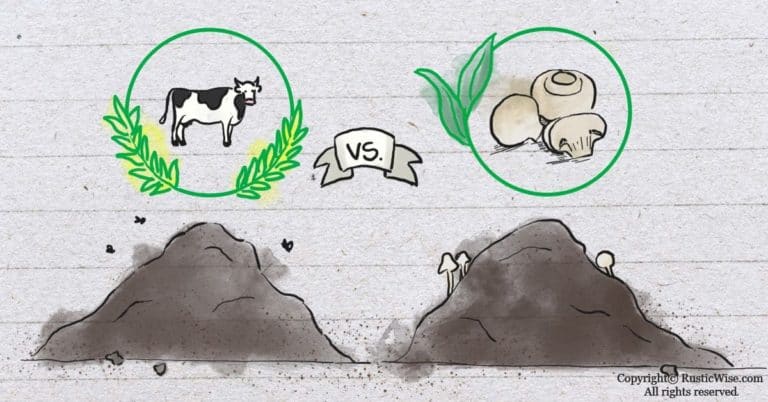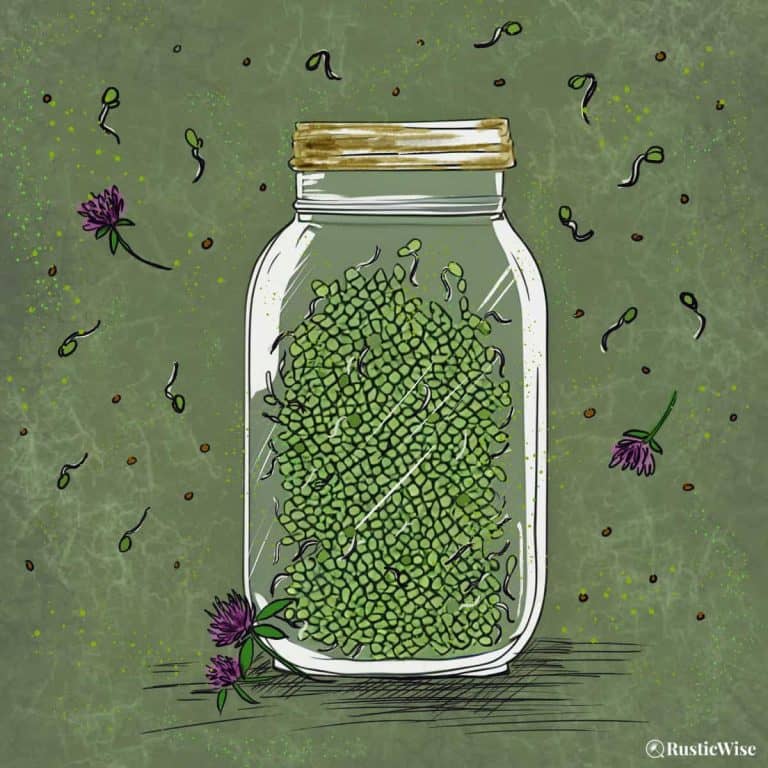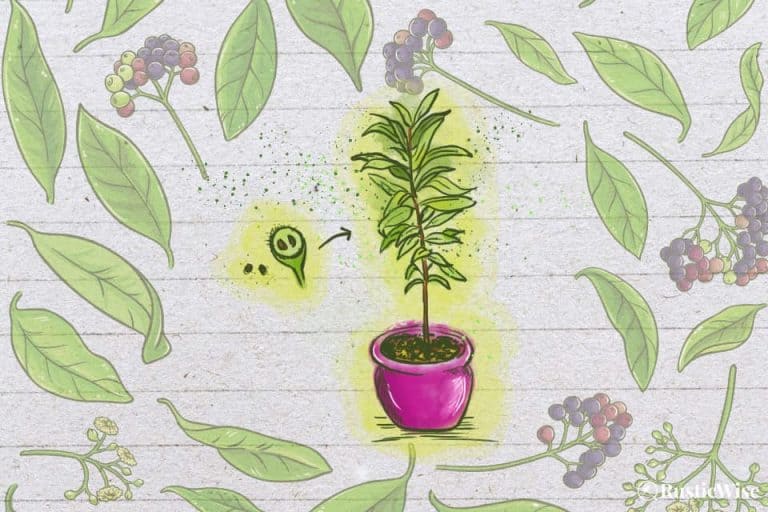What Herbs and Vegetables Should Not be Planted Together: 10 Incompatible Pairings
Just like people, some herbs and vegetables generally play well with others, while others have a more finicky nature. And some should just be kept well away from others.
Even with all the care a gardener pours into tending a garden, even the best of us can’t make certain plants or vegetables grow well when placed next to one another. You might be familiar with some companion plants. You may know that chives go well with tomatoes and carrots, while rosemary jives well with cabbage and beans.
But what about incompatible plants? What herbs and vegetables should not be planted together?
Before you go and start digging your own culinary herb garden, read up on a list of plants that are poor companion plants for one another. You’ll want to ensure you’re planting the right herbs beside certain vegetables to produce a healthy yield. Through trial-and-error and a bit of hearsay, here’s a list of 10 plant and herb combinations that shouldn’t be planted together.
What makes some plants incompatible?
Vegetables and herbs all have unique characteristics and requirements when growing. Mother nature is complex but plants are often incompatible for a few common reasons:
- Heavy feeders. Plants that require a lot of nutrients (such as cruciferous vegetables) can deplete the soil and often don’t do well beside another heavy feeder.
- Attract common pests. Sometimes plants from the same vegetable family attract the same harmful garden pests that destroy its leaves. When two plants with common pests are planted near one another, it can mean double the trouble.
- Share similar diseases. Similar to the attracting common pests, some plants are prone to the same fungal diseases that can spread when planted side-by-side.
- Competition. Some plants seek the same nutrients. When placed side-by-side, their competitive nature is often to the detriment of both.
Roundup of what herbs and vegetables should not be planted together
1. Dill and carrots
With a lovely tangy flavor, fresh dill adds pizzazz to pickles, salads, and fish. Dill is useful in attracting helpful garden insects such as honeybees, ladybugs, and butterflies, while also repelling garden pests such as aphids.
Avoid planting dill next to carrots. Why? Dill inhibits the growth of carrots. Dill and carrots are also both members of the Umbelliferae family which means they can cross-pollinate with one another.
Dill also doesn’t play nice with peppers, potatoes, cilantro, lavender, and eggplant.
Try planting dill near cabbage, brussels sprouts, corn, cucumber, and asparagus.
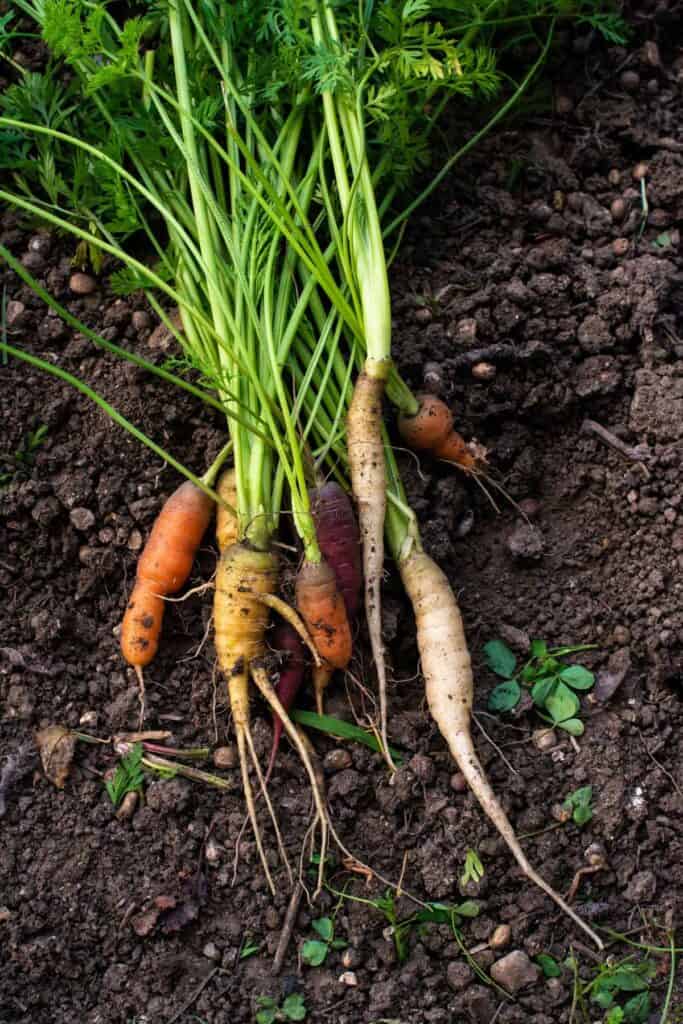
2. Cabbage and cauliflower
While cabbage, and cauliflower are cruciferous veggies that belong to the Brassicaceae family, we all know that members of the same family don’t always get along. When planted beside each other, they’re often afflicted with the same fungal disease, club root, which causes them to dry up.¹ Other plants to keep away from cauliflower and cabbage include tomatoes and radishes.
Another reason members of the Brassicaceae family should stay away from one another is they tend to require a lot of nutrients. Each is competing and draining the soil of nutrients while also weakening surrounding plants.
Instead, plant cabbage with potatoes, onions, and celery. Cauliflower thrives besides beets, spinach, and chard.
3. Fennel and pretty much everything
If there’s one herb that’s particularly difficult to plant beside others, it’s fennel. While fennel has many practical uses in the kitchen from flavoring soups, curry and brightening up other dishes with its slightly sweet anise flavor, it does not grow well beside pretty much all herbs and vegetables.² You should plant it in its own container and make it sit in the corner like the bad boy it is.
4. Cucumbers and potatoes
Cucumbers are a gardener’s dream—easy to grow, tasty, and who doesn’t want to try making their own dill pickles? Cucumbers grow well beside many other vegetables including beans, peas, and cabbage.
But cucumbers and potatoes are poor companions. These two plants compete for similar nutrients and water making them less-than-stellar companions. Sage is another poor companion plant for cucumbers attracting pests that munch on cucumber leaves.
A few good companions for cucumbers include beans, celery, corn, dill, lettuce, peas, and radishes. Marigolds and nasturtiums are a cucumber’s friend as they help to deter beetles and aphids from munching on its leaves.
5. Strawberries and members of the cabbage family
Strawberries are prolific plants that quickly grow and spread when left unchecked. This leads to strawberries draining nutrients of other nearby plants. Cabbage and other members of the same Brassicaceae family (broccoli, brussels sprouts, cabbage, and collard greens) don’t grow well beside strawberries, mainly because they both are heavy feeders requiring a lot of nutrients.
Instead, most types of beans and the herb caraway are good companions for strawberries.
6. Beans and members of the cabbage and onion families
While beans provide a nice nitrogen-boost to soil and other nearby plants, this doesn’t mesh well with plants from the cabbage and onion families such as broccoli, kale, cauliflower, garlic, leeks, chives, and mustard. Onions in particular hinder the growth of beans.
Try planting beans near rosemary. Rosemary helps keep away bean beetles.
7. Corn and tomatoes
Both corn and tomatoes are heavy feeders. When planted beside each other they tend to drain the soil of nutrients. Corn and tomatoes share common pests such as the corn earworm. The presence of these two plants beside each other intensifies the number of pests they attract.
Plant corn near cucumber, dill, beets, peas, parsley, sunflower, and squash.
8. Potatoes and tomatoes
As potatoes and tomatoes both belong to the nightshade family, they share common pests such as the corn earworm and shouldn’t be planted next to each other. They also compete for similar nutrients in the soil.
Potatoes do well beside beans, peas, and corn.
9. Mint with other herbs
Mint is an attractive beginner herb to plant as it’s easy to care for and has many practical culinary uses. However by nature, it’s a prolific spreader and you might be surprised to find mint all over your garden, in areas you didn’t plant it. For this reason, it’s best to plant mint in a container.
Mint also doesn’t jive with other common herbs as it likes partial shade, and plenty of water. Other herbs such as lavender, sage, rosemary, and thyme prefer more sun and well-drained soil. Don’t mix mint with other herbs on windowsill planters.
Instead, try planting mint with cabbage and tomatoes.
10. Onions and asparagus
Onions should not be planted near asparagus (or beans and peas for that matter). Onions and asparagus are competitors of the same nutrients.
Onions and carrots on the other hand, go together like peanut butter and jelly. Onions keep away the pesky carrot fly and aphids too.
Garden Planning Tips
The key to growing a thriving garden is planning. Try sketching out your garden plot. You can use sticky notes with the name of each vegetable, herb, or flower to arrange and re-arrange until you have a harmonious garden. Here are a few tips to keep in mind when planning your garden:
- Height of plants. Try to avoid planting very tall plants such as tomatoes, beside shorter plants. The taller plants will block the sun. Try planting shorter plants along edge of the garden, so they can still soak up a few rays.
- Watering needs. Grouping water-loving plants together makes sense. Planting a vegetable that requires a lot of water beside one that prefers drier soil just makes a gardener’s job difficult.
- Sunlight requirements. Vegetables and herbs that are sun-seekers should stick together. Ensure trees and landscaping elements don’t obstruct their sunlight.
By remembering a few basic gardening tips and remembering what herbs and vegetables should not be planted together, you should be well on your way to having a thriving garden.
👉 If you like this post, see our complete Indoor Growing Collection.
Would you like more timeless tips via email?
Fun tips to help you live an independent, self-sustaining lifestyle. Opt-out at any time.


References
- Cornell Cooperative Extension, Clubroot of Crucifers, Fact Sheet, https://ecommons.cornell.edu/server/api/core/bitstreams/2f66ff5f-ec68-4afd-ac2c-009cea63fa5a/content. Accessed November 2023.
- Emery, Carla (2012). The Encyclopedia of Country Living, 40th Anniversary Edition. Sasquatch Books. ISBN-13: 978-1-57061-840-6.

Author: Josh Tesolin
Josh is co-founder of RusticWise. When he’s not tinkering in the garden, or fixing something around the house, you can find him working on a vast array of random side projects.

